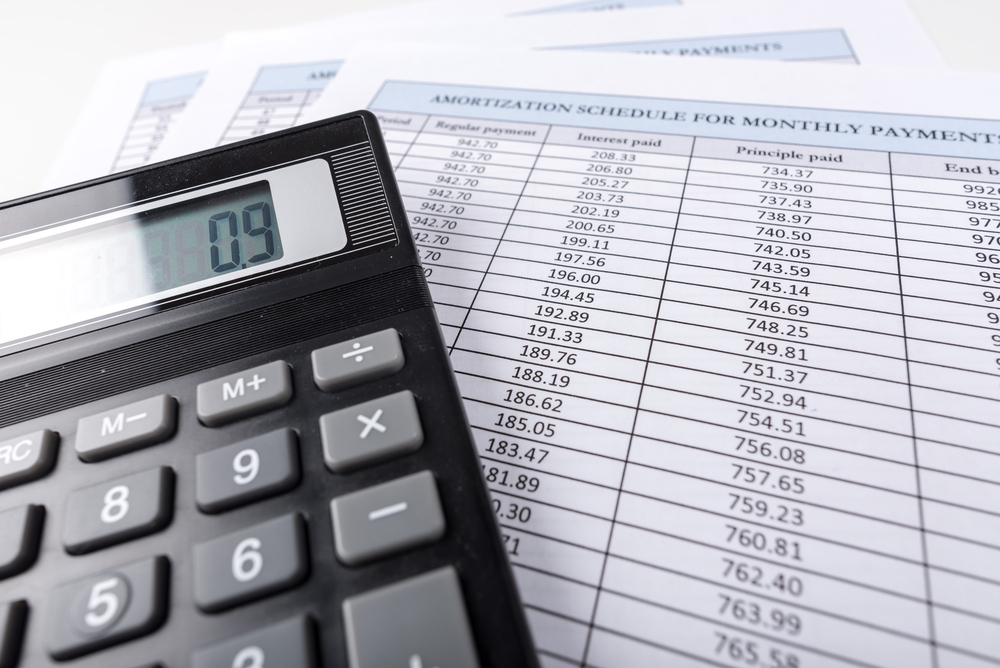Amortization Calculator Helps to Pay Your House Off Early

Amortization schedule, typically used to describe the payment schedule of a mortgage home loan through a schedule of systematic payments that are equal in value. The monthly payments are continued until the mortgage is repaid in full. This is particularly helpful in understanding how the PI (Principal & Interest) in the PITI (Principal, Interest, Taxes & Insurance) breaks down month to month and starts to change with more going towards the principal at the later stages of the loan. Very eye opening.
An amortization schedule is typically displayed in a chart or as a list that depicts each payment. The payments are broken down into the portion that is allotted to go toward the principal balance of the mortgage and the portion that goes toward the interest. An amortization schedule lists each payment throughout the entirety of the life of the loan.
The starting date of the payments should be noted for an accurate depiction of the payment schedule. The amortization schedule can be looked at as the complete payment schedule for the mortgage. With this schedule, an individual can calculate how much of the principal balance has been paid off at any given point in time. Typically, amortization schedules include a running tally of the mortgage balance.
A mortgage loan is set up differently than any other type of loan, including automobile and personal loans. The average homeowner will finance a home for 30 years. If the homeowner makes every payment on time for the entire 30 year mortgage term, the final cost of the home will be significantly more than double the original amount of money financed for the home purchase.
There is an easy way to pay off a mortgage loan earlier than the length of the loan. The first step is to contact the mortgage company and ask for an amortization schedule for the mortgage or use our trusty amortization calculator to calculate the schedule & monthly mortgage payments. In order to use the calculator, the borrower must input the following pieces of data:
-interest rate
-length of the term of the mortgage in years
-down payment which sets the initial principal balance
An amortization schedule is divided into three columns and consists of multiple lines and pages. One line in the schedule represents each month of the mortgage. The three columns tell the payments in the order they are supposed to be made, the amount of each payment that is applied to principal and the amount of each payment that is applied to the loan’s interest.
When looking at the three columns, the difference in the principal and interest varies as the loan progresses through time and more payments are made. By simply adding together future principal payments and adding that amount to the current mortgage payment, months can quickly be erased from the length of the mortgage. The homeowner is also saving the money that would have been paid with the principal as interest. Months and years can be quickly eliminated from a mortgage note by using this method.
The homeowner will need to make sure that the terms of their mortgage do not include a monetary penalty (sometimes known as a Pre-Payment Penalty) for paying the loan off early. If the penalty is present in the terms, the homeowner will need to weigh the benefits of living without a house payment compared to the amount of the penalty.
Another option is the mortgage could be refinanced with another lender and the amortization schedule could be optimized with them (and no penalty!). Paying off a large debt like a mortgage will leave any homeowner with a larger amount of spendable cash every month. The cash can be put into savings or invested for retirement, or the new disposable income can be used for a family vacation. It’s a good fiscal step that benefits the entire family.